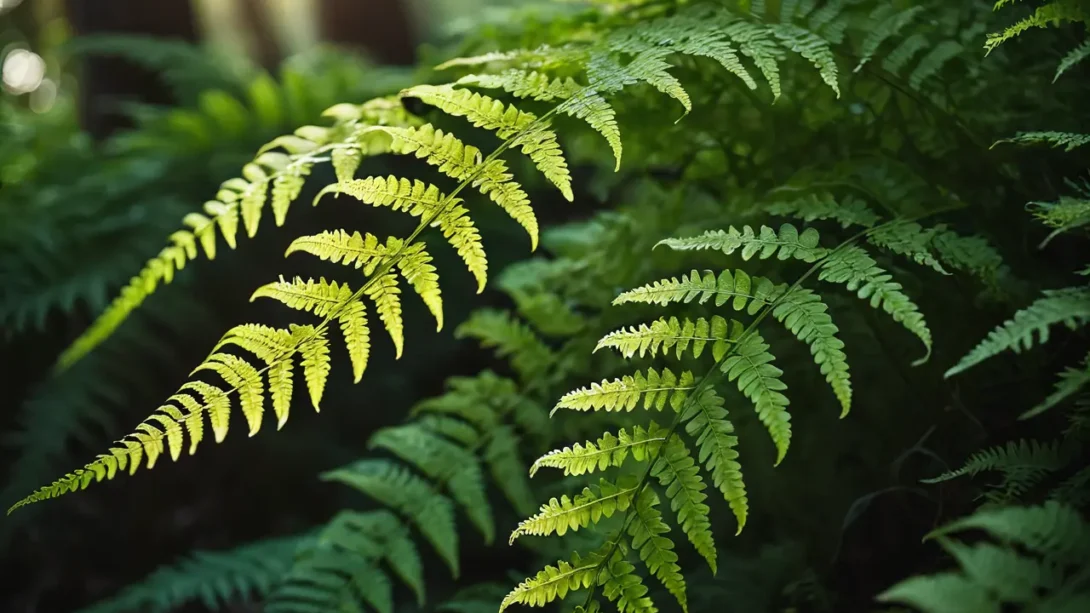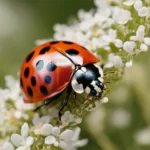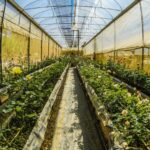Ferns, belonging to the group of non-flowering vascular plants known as Pteridophyta, are ancient organisms that have thrived on Earth for millions of years. With their lush, green fronds, ferns adorn forests, wetlands, and gardens worldwide, playing a crucial role in their respective ecosystems. Beyond their aesthetic appeal, ferns contribute significantly to the food web, serving as a food source for a variety of organisms. This article delves into the diverse array of creatures that include ferns in their diet, highlighting the intricate relationships within fern ecosystems.
Herbivores That Eat Ferns
Insects
Insects are among the primary consumers of ferns, with several species specifically adapted to feed on these plants. Caterpillars of certain butterfly and moth species, for instance, rely on ferns for sustenance during their larval stage. These insects typically target the softer, younger fronds, which are easier to consume and digest. While insect feeding can lead to defoliation and may seem detrimental, it is a natural part of the ecosystem’s balance, controlling fern populations and providing food for insectivorous predators.
Mammals
Ferns also form a part of the diet for various mammals, particularly those dwelling in forested areas where ferns are abundant. Deer, for example, are known to graze on the tender shoots and fronds of ferns, especially in the spring when other food sources may be scarce. Rabbits and some species of rodents exhibit similar feeding habits, opting for young fern parts that are rich in nutrients and relatively easy to digest. The consumption of ferns by these mammals can impact fern populations, especially in areas where these herbivores are present in high numbers, leading to overgrazing and potential declines in fern diversity.
Birds
While birds are not typically associated with consuming ferns directly, certain ground-dwelling species may nibble on young fern shoots or seeds. These interactions are less common than those involving insects and mammals but still represent a component of the fern-related food web. Additionally, birds play a crucial role in the dispersal of fern spores, indirectly supporting the propagation and spread of these plants across various habitats.
Other Fern Consumers
Reptiles and Amphibians
While reptiles and amphibians are not typically known for consuming ferns as a primary food source, they interact with these plants in unique ways that contribute to the ecosystem’s diversity. Certain small reptiles may occasionally nibble on fern fronds, although this behavior is relatively rare and usually does not significantly impact fern populations. More commonly, both reptiles and amphibians utilize ferns as shelter or breeding grounds, with the dense foliage offering protection from predators and the moist environment supporting amphibian life cycles.
Amphibians, such as certain frogs and salamanders, might be found in close association with the damp habitats that ferns often provide. Though not direct consumers of the ferns themselves, these creatures benefit from the microhabitats created by fern growth, which offer ideal conditions for hiding and hunting for their insect prey. This illustrates a more indirect but vital relationship between ferns and these vertebrates, emphasizing the interconnectedness of ecosystem components.
Microorganisms and Fungi
Microorganisms, including fungi and bacteria, play a crucial role in decomposing dead fern material, such as fallen fronds, thus recycling nutrients back into the soil. This process is essential for nutrient cycling within ecosystems, allowing for the continued growth of not only ferns but also other plant species sharing the same habitat. Some ferns form symbiotic relationships with fungi, engaging in mycorrhizal associations that enhance their nutrient uptake and overall growth.
Specific fungi species specialize in colonizing dead or dying fern tissue, breaking it down through enzymatic processes. These decomposers are fundamental to maintaining soil health and fertility, ensuring that the ecosystem remains productive and balanced. The relationship between ferns and these microorganisms highlights the importance of each species in the broader ecological network, with even the smallest organisms contributing to the health and stability of their environments.
Human Use of Ferns
Ferns have been utilized by humans for centuries, not only for their ornamental value but also for their culinary and medicinal properties. Certain fern species are edible, with fiddleheads—the tightly coiled new growth of ferns—being a sought-after delicacy in many cultures. Fiddleheads are harvested in the spring and are often cooked in a variety of dishes, appreciated for their unique flavor and nutritional content. However, it’s important to note that not all ferns are edible, and some can be toxic if consumed, so proper identification and preparation are crucial.
Medicinally, various cultures have used ferns to treat a range of ailments. Some species are known for their anti-inflammatory, antifungal, or antibacterial properties and have been incorporated into traditional remedies and healing practices. While scientific research on the medicinal uses of ferns is ongoing, their potential health benefits are an area of interest for both traditional and modern medicine.
Conservation and Threats
Despite their widespread presence and ecological importance, ferns face several threats that can impact their populations and the health of their ecosystems. Habitat loss due to deforestation, urbanization, and agricultural expansion poses a significant challenge, reducing the spaces where ferns can thrive. Overgrazing by herbivores, both wild and domesticated, can also lead to declines in fern diversity, especially in areas where natural predators are absent or in ecosystems that are already stressed by human activity.
Additionally, climate change introduces another layer of complexity, altering the conditions of many fern habitats. Changes in temperature and precipitation patterns can affect fern growth and reproduction, potentially leading to shifts in species distribution and community dynamics. Invasive species, whether plant or animal, can further threaten native fern populations by competing for resources or directly preying on ferns.
The Importance of Fern Conservation
Conserving fern species and their habitats is crucial for maintaining biodiversity and the integrity of ecosystems. Ferns play key roles in nutrient cycling, soil stabilization, and providing habitat and food for a wide range of organisms. Efforts to protect ferns must therefore include habitat conservation, responsible land management practices, and research into the impacts of environmental change on these ancient plants.
Public education and awareness are also vital components of conservation efforts. By increasing understanding of the value and needs of ferns, communities can become engaged in protecting these plants and their habitats. This includes promoting responsible foraging practices for edible ferns, supporting conservation-minded policies, and participating in restoration projects that help to replenish fern populations and their ecosystems.
Conclusion
Ferns, with their ancient lineage and diverse forms, are more than just a beautiful component of our natural landscapes; they are integral to the health and balance of ecosystems around the world. The array of creatures that feed on ferns, from insects and mammals to microorganisms, highlights the complex web of interactions that sustain biodiversity. Understanding these relationships and the threats facing ferns is essential for their conservation and the preservation of ecological integrity.
As we move forward, the importance of ferns in our natural world remains undiminished. Conservation efforts must continue to adapt and evolve to protect these remarkable plants and their habitats, ensuring that ferns continue to thrive for generations to come. By appreciating the role of ferns in the environment and recognizing the challenges they face, we can contribute to the ongoing efforts to conserve these vital components of our planet’s biodiversity.



